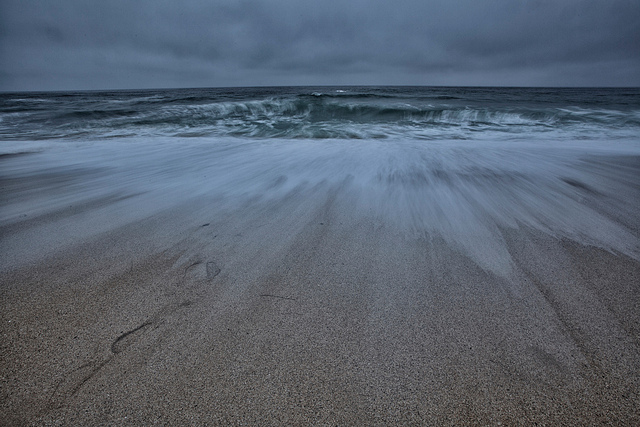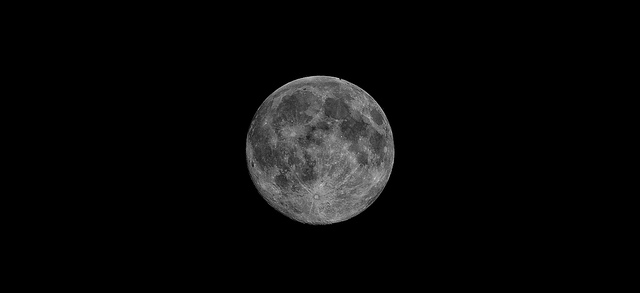 “In the 1960s we noticed there was a problem with time,” says Witold Fraczek, an analyst at Environmental Systems Research Institute in Greater Los Angeles. In 1948 Harold Lyons at the National Bureau of Standards in Washington, D.C. built the world’s first atomic clock, an instrument that keeps time based on the vibration of atoms or molecules. But the atomic timekeepers noticed that every year was slower than the last. “They said what is wrong with the clock, only to realize that actually earth is slowing down and there was nothing wrong with their atomic clock,” says Fraczek.
“In the 1960s we noticed there was a problem with time,” says Witold Fraczek, an analyst at Environmental Systems Research Institute in Greater Los Angeles. In 1948 Harold Lyons at the National Bureau of Standards in Washington, D.C. built the world’s first atomic clock, an instrument that keeps time based on the vibration of atoms or molecules. But the atomic timekeepers noticed that every year was slower than the last. “They said what is wrong with the clock, only to realize that actually earth is slowing down and there was nothing wrong with their atomic clock,” says Fraczek.
The sun rises in the East. And sets in the West. And that’s because the earth spins as it circles the sun. It completes a rotation every 24 hours. But this scenario, this earth-spinning business, it hasn’t always been like this. It used to be considerably faster. And it will be slower in future. But I’m getting ahead of myself. Let’s rewind. Like by five billion years.
 So no one knows exactly, but one theory is that in the salad days of the solar system, the earth was struck by something so huge, with such force, that it started to spin like a top. “In fact that’s probably why we have the 24 hour rotational speed we have now,” says Geoffrey Landis, a scientist at NASA Glen Research Center, Cleveland Ohio.
So no one knows exactly, but one theory is that in the salad days of the solar system, the earth was struck by something so huge, with such force, that it started to spin like a top. “In fact that’s probably why we have the 24 hour rotational speed we have now,” says Geoffrey Landis, a scientist at NASA Glen Research Center, Cleveland Ohio.
Landis points out that some scientists believe that same collision created the moon. In turn, the moon’s gravitational pull created the world’s tides – that is, once oceans formed. And this is where we come full circle. The tides, it turn out, are slowly pushing back against the spin of the earth, and slowing the world down, to the tune of several seconds a century***. “With every rotation, the tide waves hit the western side of the continents. The earth is moving but the tidal waves are going against it,” explains Fraczek. “It’s minimal from the planet’s point of view but it still counts for about five seconds per century.”
Now five seconds is nothing. I can barely ask someone how their day is going in five seconds much less wait for their answer. I mean, the most I’ve ever done in any five-second increment in my entire life probably took place immediately after I was born when I figured out how to live but I can’t remember for sure. I don’t even know if I’ve fallen in love in a mere five seconds. Minutes, I can do something with. Seconds, I have difficulty. But five seconds every century across millennia has a habit of adding up.
For example: In the Devonian era, 400 million years back, the world spun faster. The tetrapods, ammonoids and corals that called this primordial earth home lived through 22 hours days and a 400-day long year. At this rate, going in the other direction, four billion years from now, the earth will slow to a halt.
But let’s imagine a point before that, when the day is just longer. “Imagine a 30 hour long day, that would change everything for us. The day is too short for me. I would happily accept another hour in my day. I would be able to sleep longer,” says ESRI’s Fraczek. “But seriously there would be many many problems with biology.”
The climate would change. Weather would change. Oceans and land would shift. The uplands of central Africa would be elevated to 12 km above sea level. Take the scenario all the way to where the Earth halts spinning altogether and starts to orbit the sun in a geosynchronous fashion. Then you get a planet Earth one side of which always faces the sun. “So on side of the earth everybody would be frying while on the other everything would freeze,” says Fraczek. “There’d be areas where you would continuously be able to observe the sunset or there would be small enclaves where life would still be possible.”
Now. What’s the point of envisioning a longer-day future when the odds of humans and their circadian rhythms being around to sleep and wake through it are minuscule. “I think it’s part of our nature that we all continuously wonder what would it be like if things are not the way they are now,” says NASA’s Landis. “It’s our intellectual curiosity and I’m very much in favour of intellectual curiosity. It sort of what makes us what we are. It allows us to explore our world and learn more about it.”
_________
***Errata: As LWON reader Michael Fisher points out, this is wrong math (although it’s the figure that I got from Mr. Fraczek in our phone interview – hence his quote to that effect and why I ran with it). The figure is actually closer to FIVE seconds every FIVE thousand years (ish).
_________
Anne Casselman is Vancouver based science journalist who’s been a Guest of LWON before. She loves the fact that all of us are just objects in space influenced by the sun, moon and living bodies around us — a fact of which the lovely scientists in this piece reminded her in certain and humbling terms.
Photo credits: Yinghai, filip.farag
Hi Anne
A few corrections. I’m fairly confident about the first two below:-
1] These days the rotation of the Earth slows down by about 0.005 seconds per year. Thus the day gets longer by 5 seconds every THOUSAND years
2] Some recent models suggest the proto-Earth may well have had a very fast spin [a day length of 2-3 hours] BEFORE the hypothetical encounter with the hypothetical Mars-sized body [Theia]. So I’m not sure it’s fair to write that the collision of Theia with proto-Earth caused Earth “to spin like a top”
3] I don’t buy the idea that the Earth will end up with one side permanently facing the Sun. The Sun will be a red giant before that happens. Eventually the Earth’s rotation period will be identical to the Moon’s orbital period. This situation is called synchronous (1:1) rotation ~ in the distant future [many billions of years from now], the Earth will have a day which is 47 current days long, and the Moon will only be visible from one side of the Earth.
Neat! The speculations on what life would be like in the event of various changes is always pretty interesting. I did wonder how that timeline of changes coincided with expected changes in the sun.
Michael,
1. For the five seconds figure, I went from what Witold Fraczek told me in our phone interview, so you can excuse the error on my part.
But, I have gone back over my notes from my interview with Geoffrey Landis over at NASA and you are right-ish. Landis quotes a figure of about 5 milliseconds every 50 years.
By my math then, I get the slowing being ONE second every thousand years. FIVE seconds every FIVE thousand years. Yes?
Thanks for catch!
2. I am going to leave this “spinning like a top” phrase. Obviously it was not spinning EXACTLY like a top. This is an illustrative phrase. And I’m going with what Landis told me here. If you want to debate this with Landis, you are welcome to! Note that the wording says this is “one theory”. And that “some scientists” buy it.
3. Again, you are welcome to debate the merits of this theoretical “freezing/frying” future Earth with Fraczek. But that’s what he told me. All in the context of a hypothetical thought experiment so I’m not sure how far either of you will get.
Hi Anne
Point 1:-
I got that figure from memory & my memory is faulty!
You wrote in the above article that the Earth day length was 22hrs 400 million years ago. That means the length of the day has increased 7200 seconds in that time. This works out as a mean increase of 18 seconds per million years
I’ve checked an atomic clock website & it claims that the Earth’s mean solar day is increasing at a rate of 1.7ms [0.0017 seconds] per century which equates to 17 seconds per million years
This article comes up with the same figure in the second paragraph:-
http://www.scientificamerican.com/article.cfm?id=earth-rotation-summer-solstice
2. I was trying to say that the Earth didn’t START to spin fast upon collision ~ it was already spinning fast with a 2 to 3-hr day. Recent computer modelling suggests it couldn’t have been spinning much faster prior to the collision without coming apart under centrifugal force & it didn’t increase substantially. But I accept your point that I should take it up with Landis
3] Yes ~ it’s a thought experiment which he uses to illustrate his software… But in the real world I will hope to see you under a red swollen Sol in 5 Billion years & we can crack a beer under a weirdly long Earth day with a stationary Moon in the sky 🙂
I don’t think I said anything about how fast the Earth may have been spinning before being hit with a Mars-sized object. That’s difficult to measure, since such an impact erases most of the geologic record.
My point was that if such an impact did occur– and our leading models of the lunar formation suggest it did– then the 24-hour length of the day we have now is a relic of that impact (and the subsequent evolution of the rotation under the effects of solar and lunar tides).
Thank you for weighing in and clarifying Geoffrey!
Looking over my interview transcript, you absolutely didn’t say anything about how fast the Earth was spinning pre this theoretical early-history impact.
You did say that very early in the solar system around the 5 billion years ago mark, “there was probably an impact that started us rotating, although that’s fairly speculative.” Hence why I worded it the way I did.
Is the way the post phrases it now misleading or inaccurate then? I defer to you and will run an errata most humbly.